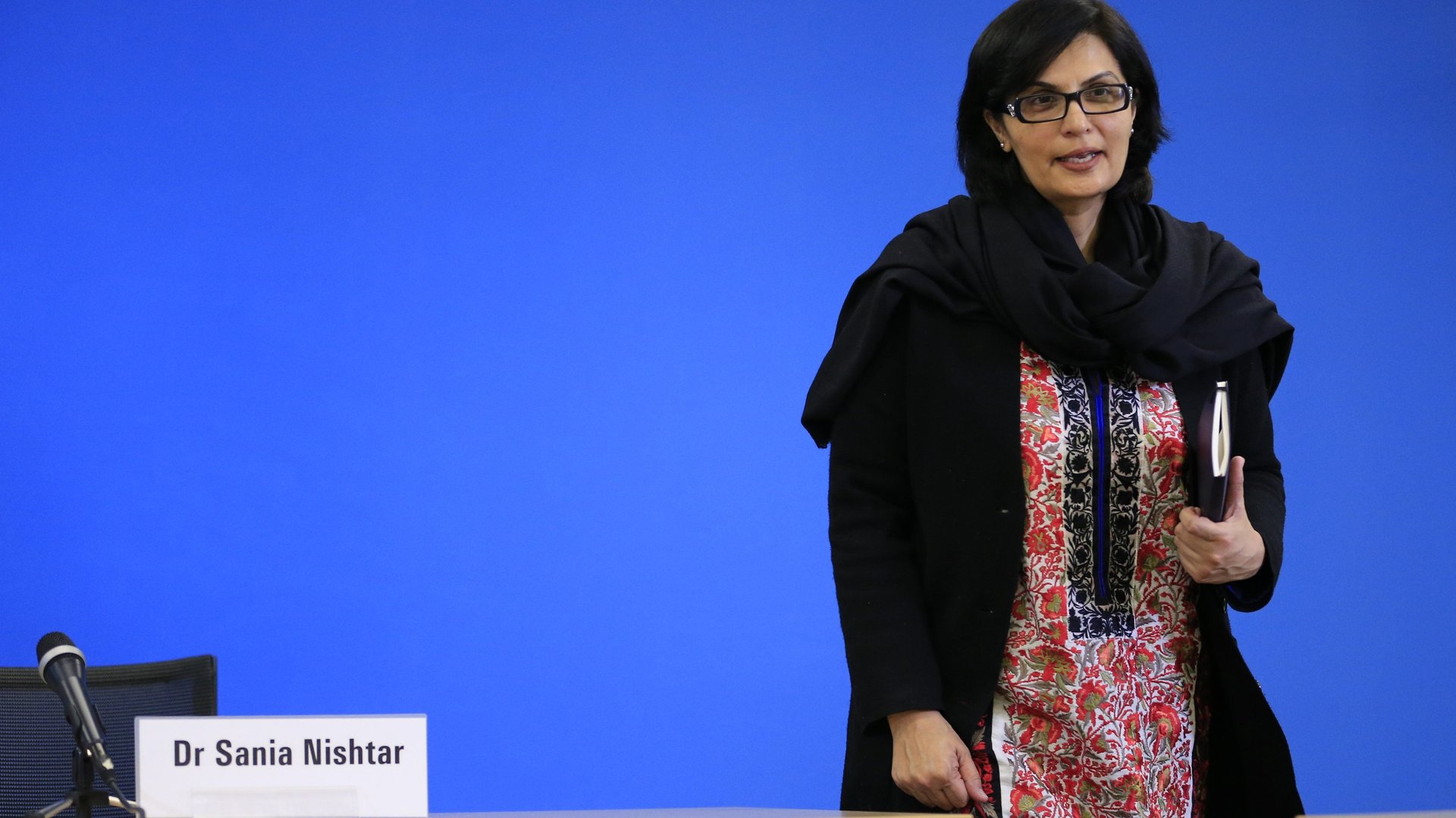Word for word, a perfect example of how we treat women seeking power
The World Health Organization (WHO) is about to choose a new director general, who will be elected in May by member states. That person will run one of the United Nations’ most powerful agencies, with a $4.3 billion budget (pdf, p. 5), and deal with global catastrophes like the next Ebola- or Zika-like crises, health emergencies caused by climate change, and the famine that’s currently threatening 20 million people in Yemen and Africa.


The World Health Organization (WHO) is about to choose a new director general, who will be elected in May by member states. That person will run one of the United Nations’ most powerful agencies, with a $4.3 billion budget (pdf, p. 5), and deal with global catastrophes like the next Ebola- or Zika-like crises, health emergencies caused by climate change, and the famine that’s currently threatening 20 million people in Yemen and Africa.
The list of three finalists in the race to run the WHO includes two men, Ethiopian Tedros Adhanom Ghebreyesus (who came in first, with 30 votes, in a preliminary vote) and the UK’s David Nabarro (18 votes), and one woman, Pakistani candidate Sania Nishtar (28 votes). Last week, a New York Times article profiling each candidate added an interesting perspective on the race, notable for how perfectly it exemplifies the unfair treatment of women seeking power.
Here’s a look at the words chosen by the author and his sources to describe the candidates [bold ours]:
Tedros
“Dr. Tedros, 52, who uses his first name in his campaign, is relaxed and not as instinctually wary as many diplomats. He once let a reporter interview him in his hotel room as he changed clothes for an event.”
In other words, frontrunner Tedros is an easygoing and confident candidate who shows remarkable accessibility.
“Dr. Tedros takes his work to heart,” continues the profile, which highlights his passion and personal story with malaria, a disease that he himself contracted as a young doctor.
Nabarro
“Perennially on the road, Dr. David Nabarro is a war horse who has seen many medical battlefields—but still champs the bit for more,” opens the profile.
Nabarro is built up as a fighter, and the “most forceful” candidate (despite being the least favorite so far)—a man who “has fought some sharp-elbowed power struggles.” McNeil Jr. jokes that Nabarro’s ”Boris Karloff-like voice is perfect for an expert in epidemics: If he read ‘Peter Rabbit,’ it would sound like ‘The Doomsday Chronicles.'” His addressing some uncomfortable matters off the record is “sophisticated,” and media-savvy.
Nishtar
Here’s how the second-place candidate and only woman is introduced:
“Dr. Sania Nishtar comes from a prominent political family in Pakistan and acknowledges that she lives “a comfortable life in Islamabad.” She graduated at the top of her medical class and strikes some experts as a star pupil, qualified more because of her intellect than for her experience.”
The focus switches from the individual and the work to Nishtar’s family background and “comfortable life.” “Experts” quoted also treat her candidacy with paternalism: Her intelligence and academic proficiency sound like limitations, rather than qualities, with the condescending label ”star pupil.”
The profile fails to note that Nishtar was the first female cardiologist in her country, that she has a PhD from King’s College London, that she was key to establishing Pakistan’s ministry of health. McNeil does report, however, that “when pressed to put her strongest qualification in a sentence, she struggled,” and sniffs at her use of development jargon.
While the other two candidates’ programs are introduced as what they would do “as leaders” of the WHO, the word and its synonyms do not appear in Nishtar’s profile.
Unlike the United Nations, which has never been led by a woman, the WHO has had two women at its helm so far: Incumbent Margaret Chan is a Hong Kong-Canadian doctor who has helmed the body for two terms, since 2007. Before Chan, the director general from 1998 to 2003 was former Norwegian prime minister Gro Harlem Brundtland. In the context of an institution that has opened to women’s leadership, you might expect a more neutral treatment of candidates.
But the article’s closes with an image of exactly the type of exclusion that many women experience when trying to break into a boys club: “In public forums, she has looked a bit left out as Dr. Nabarro and Dr. Tedros, who know each other and have sometimes clashed, jokingly tussled over a microphone and dropped the names of former WHO leaders they had worked with.”